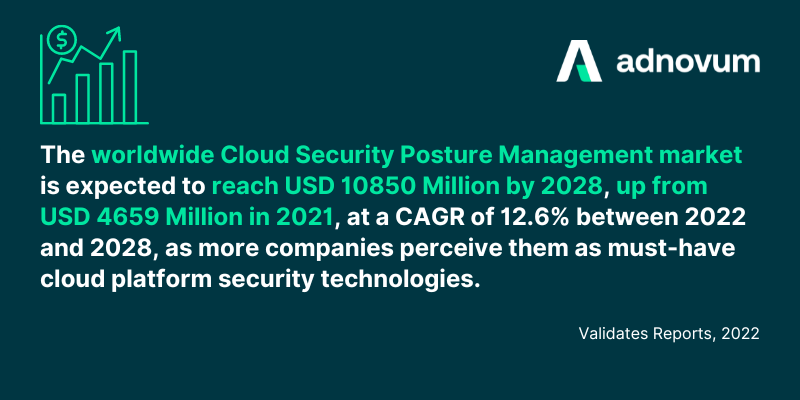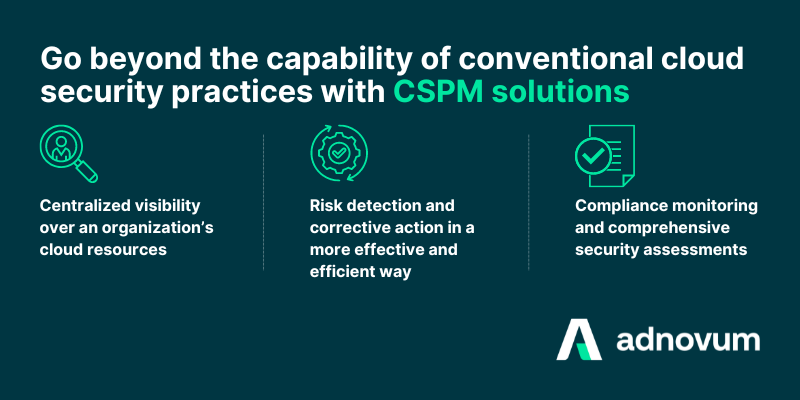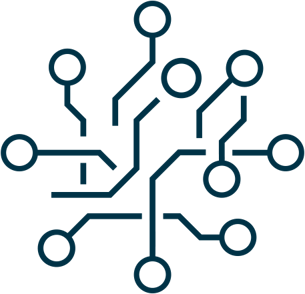- On this page
- A Glance at Cloud Security Posture Management
- The Importance of Cloud Security Posture Management (CSPM) in Preventing Data Breaches
- How CSPM Enhances Security
- Benefits of CSPM (Cloud Security Posture Management)
- 6 Best Practices for Cloud Security Posture Management
- CSPM vs Other Cloud Security Systems
- FAQs about Cloud Security Posture Management (CSPM)
The cloud strategy paves way for various business innovations and data-driven business models. For the agility and efficiency of cloud computing, businesses should aim to streamline their operations, while cutting down on the total cost of ownership, delivery time, enabling them to meet the ever-changing customer and market needs.
However, such an innovation without a proper strategy from domain experts would turn itself into an uncharted region. Cloud migration can thus expose firms to a new cyber threat scenario that threatens not just their overall business growth but the very life of a corporation. An emerging solution, Cloud Security Posture Management (CSPM) comes to handle the sophistication of security, privacy, resource access, and regulatory compliance in the cloud infrastructure.
A Glance at Cloud Security Posture Management
The term "Cloud Security Posture Management" (CSPM) was coined by a research firm Gartner to describe a new category of data security solutions that may enable automated security and maintain compliance in the cloud. This solution can check and compare a cloud system to established standards and known security threats.
Consequently, businesses can employ CSPM solutions to automate the discovery and correction of compliance problems and misconfigurations in cloud-based environments. In addition, they can instantly examine an IaaS or PaaS setup in light of cloud security best practices and guarantee that all cloud setups are compliant with standards like GDPR and HIPAA.
The Importance of Cloud Security Posture Management (CSPM) in Preventing Data Breaches
Misconfiguration is a leading vulnerability in the cloud that can lead to a data breach (NSA, 2021). Almost all cloud security breaches were caused by client misconfiguration - cloud consumers will allow 99% of future assaults (Gartner, 2020). Misconfigurations and configuration drift may result in security loopholes and possible breaches, exposing enterprises to the risk of service disruption and reputational damage. CSPM solutions are developed to address misconfiguration-related cloud security issues.

CSPM will address the following issues on the cloud to bolster the security posture and eliminate the primary causes of data breaches:
- Exposure of vast volumes of sensitive data due to misconfigurations of cloud infrastructure, which may result in legal liabilities and financial damages.
- Growing pains in establishing cloud governance (such as visibility, permissions, policy enforcement across business divisions, and a lack of awareness about cloud security measures) in tandem with widespread cloud use inside an organization.
- Continuous compliance for cloud-based applications and workloads, which is ineffective with on-premises technologies and methods.

In view of the vastness and complexity of today's business settings, the crucial role of CSPM can be sorted at a higher level. Especially for organizations that operate in many locations and deal with an enormous amount of procedures daily, they need valuable features from CSPM to effectively manage and safeguard their privileges and critical cloud resources.
How CSPM Enhances Security
Discovery & Visibility
CSPM allows for the discovery and visibility of cloud infrastructure assets and security settings. With this system, users have access to a consolidated data hub regardless of the multi-cloud environments or accounts they may use. Misconfigurations, metadata, networking, security, and modification activity are just some of the cloud resources and statuses that are automatically discovered upon deployment. Account, regional, project, and virtual network-wide security rules can all be maintained from this central spot.
Detecting Anomalies
CSPM will map configurations to compliance standards. This process will enable it to find the security gaps that should be patched and send out a warning. Therefore, CSPM alleviates the burden on security experts to decipher compliance requirements and how they map to misconfigurations.
Timely Remediation
Automatic problem resolution is a feature of several CSPM services, made possible by the combination of real-time regular monitoring with automation capabilities that can identify and solve problems like incorrect account privileges. Multiple regulations, such as HIPAA, can be applied to the configuration of continuous compliance feature.
Benefits of CSPM (Cloud Security Posture Management)
Proactive Threat Detection
CSPM continuously monitors cloud environments, identifying vulnerabilities and misconfigurations before they are exploited, ensuring robust cloud security.
Automated Compliance Monitoring
CSPM tools automatically assess compliance with industry standards and regulations, making it easier for businesses to stay compliant with minimal manual intervention.
Reduced Misconfigurations
By scanning cloud resources for configuration errors, CSPM helps to minimize human error, which is one of the leading causes of cloud security breaches.
Visibility Across Cloud Environments
CSPM offers comprehensive visibility into an organization’s cloud infrastructure, allowing security teams to detect and address issues in real-time across multi-cloud environments.
Cost Optimization
CSPM not only improves security but also helps identify unused or underutilized cloud resources, optimizing costs by recommending necessary changes.
6 Best Practices for Cloud Security Posture Management (CSPM)
With CSPM, security leaders can take proactive measures to increase visibility, control, protect cloud environments and stay compliant. Here are 6 valuable tips that security practitioners can leverage to ensure CSPM settings improve their cloud security posture:
- Have complete visibility into the cloud resources: Due to the distributed nature of cloud architecture, sensitive data is constantly being produced and processed by a vast number of systems, applications, and networks located in a wide variety of physical locations.
- Clarify the allocation of security tasks in the cloud: fuzziness in this area may lead to confusion and gaps in protection.
- Automate as much of cloud security as you can: doing so will reduce the likelihood of human error and improper setup on the part of cloud users.
- Prioritize security breaches by assessing their impacts: failing to detect false positives and isolating key breaches may lead to inactivity and significant blind spots.
- Automate compliance with cloud-based industry standards: security and compliance auditing practices that were developed for on-premises systems will not be applicable to cloud-based apps.
- Add mandatory security checks to Dev pipelines: both risks and expenses are kept to a minimum when security flaws are discovered and fixed before they reach production.
CSPM vs Other Cloud Security Systems
CSPM vs Cloud Workload Protection (CWP)
While CSPM focuses on identifying and remediating security misconfigurations, Cloud Workload Protection is more focused on safeguarding workloads and applications running in the cloud. Both are complementary, with CSPM handling infrastructure-level issues and CWP securing workloads.
CSPM vs Cloud Access Security Brokers (CASB)
CASBs enforce security policies between cloud service consumers and providers, focusing on data protection and threat detection at the access layer. CSPM, on the other hand, offers a broader security posture analysis of cloud configurations and resources.
CSPM vs Cloud Infrastructure Entitlement Management (CIEM)
CIEM helps manage user access permissions across cloud environments. CSPM complements CIEM by ensuring the overall cloud environment is secure, while CIEM zeroes in on identity and access control.
Traditional security methods are no longer sufficient for cloud settings; instead, organizations require a solution proving centralized visibility and automation security improvements. The CSPM were developed in response to such needs, and they are meant to improve the cloud’s security posture by making it more robust in the face of the cloud's ever-changing landscape. Ultimately, a secured IT system and industrial regulatory compliance from CSPM services will grant businesses peace of mind for their ongoing cloud-based operations, which is beneficial to their business growth prospects.
With the help of Adnovum's security experts, your organization can have Cloud Security Posture Management solutions tailored to your specific requirements, taking your cloud security defenses to the next level.
FAQs about Cloud Security Posture Management (CSPM)
What is cloud security posture management, and why is it important?
Cloud security posture management (CSPM) helps organizations identify and fix security risks in cloud environments. It ensures compliance and strengthens cloud security by identifying misconfigurations and vulnerabilities.
How do cloud security posture management tools work?
CSPM tools continuously scan cloud infrastructure for misconfigurations, vulnerabilities, and compliance issues. They provide real-time alerts and remediation guidance to keep cloud environments secure.
What are the benefits of using CSPM over traditional cloud security systems?
CSPM offers automated monitoring, real-time alerts, and a comprehensive view of cloud security, which traditional tools often lack. CSPM focuses on cloud-specific threats, ensuring tailored security.
Can CSPM be used in multi-cloud environments?
Yes, CSPM tools are designed to offer visibility and security monitoring across multi-cloud environments, ensuring consistent security management regardless of the cloud providers in use.
How does CSPM help with compliance?
CSPM tools automatically assess cloud configurations against industry regulations and standards, helping businesses maintain continuous compliance with minimal manual effort.





